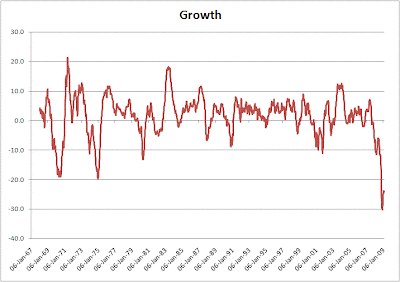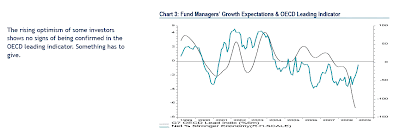Mohamed El-Erian, the chief executive of PIMCO, famous fund manager and economist, has a wise article at Financial Times (FT) today. Here's the key message, in my view:..................
Looking forward, there are two factors that suggest a high risk of additional collateral damage and limited effectiveness in the months ahead. First, it is not clear government balance sheets can carry the burden imposed on them.
Mushrooming government financing needs must be covered at a time when many holders of debt are turning from buyers to sellers. No wonder the Federal Reserve is "prepared" to buy Treasury bonds. But will the world be comfortable with two US public agencies offsetting operations that ultimately must be supported by someone else?
Second, virtually every country now seeks to implement fiscal stimulus and rescue national champions. Yet those with weak initial conditions will find it difficult to keep up.
Instead they face a lose-lose proposition: maintain the pace of policy activism and lose control over funding costs and, in some cases, exchange rates; abandon it and see the economy hollowed out by the actions of others.
Fortunately, such clouds have a silver lining. As the risks become clearer, a greater degree of international policy co-ordination may emerge. This is not just about regulatory harmonisation. It is also about the urgent need for policy principles that limit the risk of this new type of beggar-thy-neighbour phenomenon. Otherwise, the policy activism of some countries will undermine those of others and, by implication, the welfare of the global economy.
This is very much similar and complementary to what the FT Columnist Wolfgang Munchau wrote on Sunday:
Expect to see three effects with progressively destructive force. The first is that the stimulus is much less effective than it could otherwise have been. When everybody tries to gain a competitive advantage over each other, the effects usually cancel out.
Second, the stimulus and bank rescue packages harm the single European market directly. The French subsidies are more blatant, as is the protectionist rhetoric of its president. But everybody in Europe plays the same game. It is not as though the single market is the default position for European commerce. Much of the service sector is exempted. Europe lacks an effective pan-European retail infrastructure and retail banking system. Reversing this programme long before it is completed would be a mistake.
Third, and most destructive, the combined decision on stimulus and financial rescue packages poses an existential threat to monetary union. A blanket loan guarantee to every bank, as most governments have granted, in combination with indiscriminate capital injections and a reluctance to restructure, will mean the transformation of private into sovereign default risk – aggravated further by the economic downturn. Some insolvent banks are now owned by the state, while the bulk of damaged, not-yet-insolvent banks are lingering on, hoarding cash. This programme is a drain of resources with no resolution in sight.
I would now expect several eurozone countries with weak banking sectors to get into serious difficulties as the crisis continues. There is a risk of cascading sovereign defaults. If this was limited to countries of the size of Ireland or Greece, one could solve this problem through a bail-out. But solvency risk is not a problem confined to small countries. The banking sectors in Italy, Spain and Germany are increasingly vulnerable.
..........
The right course would be to solve the underlying problem – to shift at least some of the stimulus spending to EU or eurozone level and, ideally, drop those toxic national schemes altogether and to adopt a joint strategy for the financial sector, at least for the 45 cross-border European banks. But this is not going to happen. It did not happen in October, and it is not going to happen now. As a result of the extraordinary narrow-mindedness of Europe’s political leadership, expect serious damage to the single market in general and the single market for financial services in particular. As for the eurozone, I always argued in the past that a break-up is in effect impossible. I am no longer so sure.













